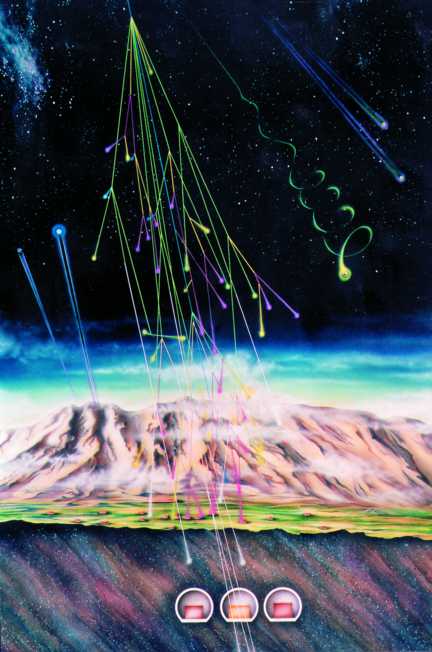From space, a flux of cosmic ray particles reaches our atmosphere; here the particles multiply in a chain of successive interactions and decays, and give origin to a “cosmic rain” which hits each of us at a rate of about 4000 charged particles per minute.
Primary cosmic rays consist mainly of protons, helium and iron nuclei, photons and neutrinos. They come from the sun, from supernovae and other not well identified cosmic sources inside our galaxy, and also from outside our galaxy.
The study of cosmic rays is important in itself in order to study this natural phenomenon; it was also the key to explore the world of subnuclear physics in the ‘30s and ‘40s, when accelerators could yield particles which could barely reach the surface of atomic nuclei.
Today cosmic rays allow the investigation of the cosmos via high energy particles, the study of fundamental physics at energies not yet achievable in our laboratories, and to obtain indications on the first phases of the evolution of our universe. The Gran Sasso Laboratory, in central Italy, is a large laboratory dedicated to the study of this field.
1) The interaction of cosmic rays in the atmosphere and in terrestrial rocks in a presentation which also shows the three experimental halls of the Gran Sasso National Laboratory.
